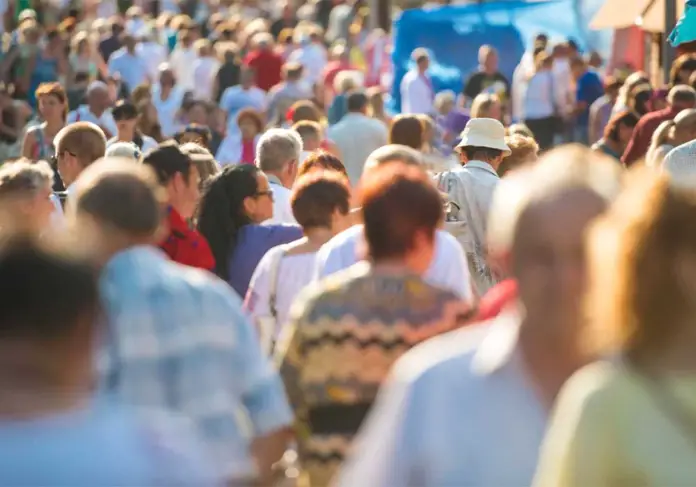With the recent substantial increase in the human population, humans have emerged as one of the most successful species on Earth. The increase in growth has been accompanied by improvements in technology and resource use. Although this achievement has brought about beneficial discoveries and developments for the benefit of humanity, it also presents risks to the planet’s limited resources.
The interaction between people and the resources at their disposal is complicated. While resource scarcity or rapid population increase is the main cause of imbalance, it is important to include population growth while evaluating this relationship. This balance is also shaped by elements including population distribution, government policy, technological advancement, and social structure.
More and more geographers are researching the direct connections between resources and population. No matter how big a nation’s population is, it matters economically since people are both producers and consumers. Production is heavily dependent on the quantity and quality of human labour, both of which are influenced by population size, age distribution, and educational attainment.
Income and the inclination to consume have an impact on consumption, which is the total amount of goods and services bought and consumed. While psychological elements like advertising and social influences may have an impact on consumption patterns, income levels are a major determinant of consumption levels. The national income distributed across the populace is directly correlated with the standard of living. In general, living standards are greater in nations like Canada, where a small population enjoys a large national income, than in nations like India, where a huge population has a smaller national income, leading to generally lower living standards.
The world population to resource ratio is significantly out of balance. According to the Human Development Report, the richest 20 percent of people on the planet get 85 percent of the world’s revenue, while over three-quarters of the world’s population lives in developing nations where they receive only 16 percent of global income. The order of occupation and growth trends must be examined in relation to this discrepancy in population and resource distribution.
When evaluating the links between population and resources, it is essential to consider the population’s growth, dispersion, and density. Population and resource imbalances result from high rates of population expansion occurring in many emerging regions at the same time as resource shortages. This imbalance is also influenced by social, cultural, and economic variables, such as the makeup of social institutions, developments in technology, distribution networks, and governmental regulations.
As a result, a region’s capacity to sustain its population is influenced by a wide range of social, cultural, and political factors in addition to its physical resources.
Global environmental challenges have involved both industrialised and developing nations. Even Nevertheless, industrialised nations account for 85% of global GDP, which is a substantial contribution to the consumption of minerals and fossil fuels, even if they only make up 20% of the world’s population. There have been major environmental effects as a result of this unbalanced consumption. All countries are likely to suffer greatly as a result of the current levels of resource usage by wealthy nations and current technologies. This is especially clear from the rising atmospheric carbon dioxide and trace gas levels linked to industrialization, which have the power to change the patterns of the world’s climate and raise sea levels.
Resources and population are closely related; shifts in population have an effect on the amount of natural resources available, and vice versa. Availability is the quantity of resources that are available for usage by humans. Reduced availability may cause population trends to change as communities look for other ways to get the supplies they need. Consumption patterns, technical developments, and social organisation patterns all contribute to the acceleration of resource use, waste creation, and environmental degradation caused by population rise. A growing human population increases the likelihood of irreversible environmental changes, as shown by indicators like deforestation, acid rain, ozone depletion, greenhouse gas emissions, biodiversity loss, soil erosion, and shortages of food, water, and fuel wood.
Local and regional case studies illustrate the complex relationships among human population, economic development, and natural resources. diverse variables have diverse effects on the environment and economy. These include population composition, distribution, rural-urban dynamics, and international migrations. Furthermore, poverty and a lack of economic opportunity promote environmental deterioration by encouraging the use of marginal resources and hastening population increase.
Population predictions are used by government planners and politicians around the world to forecast future demographic trends and to anticipate future needs for basic resources like food, water, energy, and services. With the help of these forecasts, policymakers may better build flexible policies for a range of projection scenarios by identifying important trends that may have an impact on resource consumption and economic development.
The population of the world is expected to expand by 34% from current levels to 9.7 billion by 2050. The majority of this population increase will take place in underdeveloped nations. The rate of urbanisation will keep rising, and by the year 2050, almost 70% of people on Earth will live in cities, up from 49% at the moment. Significant increases in income levels are anticipated.
In order to feed this growing, wealthier, and more urbanised population, food production apart from biofuels must rise by 70%. The existing 2.1 billion tonnes of cereals must be increased to almost 3 billion tonnes annually, and the 470 million tonnes of meat produced annually must increase by more than 200 million tonnes. According to these forecasts, the demand for food would rise significantly globally by 53%, energy will rise by 56%, and residential water demand will rise by 234 percent by 2050. This highlights the urgent need for resource management techniques and proactive planning.
A comparison of Pakistan’s resources and population shows that the country’s natural resources and human population have a complex relationship. With more than 230 million inhabitants, Pakistan is the fifth most populated nation in the world. A large number of people puts a lot of strain on the country’s resources, which include minerals, electricity, water, and land.
To satisfy the demands of its expanding population, Pakistan must properly manage and utilise its resources, a task that presents difficulties. Despite having an abundance of natural resources, such as mineral reserves, lush agricultural land, and rivers like the Indus, the nation faces resource mismanagement, inefficient use, and environmental damage.
In Pakistan, the mismatch between population expansion and resource availability makes socioeconomic divides and environmental deterioration worse. The nation’s resources and infrastructure are further strained by the fast urbanisation, unsustainable agricultural methods, and industrial growth.
In order to overcome these obstacles, Pakistan needs to implement sustainable development plans that put the preservation of natural resources, their effective use, and the protection of the environment first, all the while fostering socioeconomic growth and raising the standard of life for the populace. Furthermore, to ensure the sustainable management of Pakistan’s resources in the face of challenges, strong international collaboration, investments in infrastructure and technology, and efficient governance are essential.







